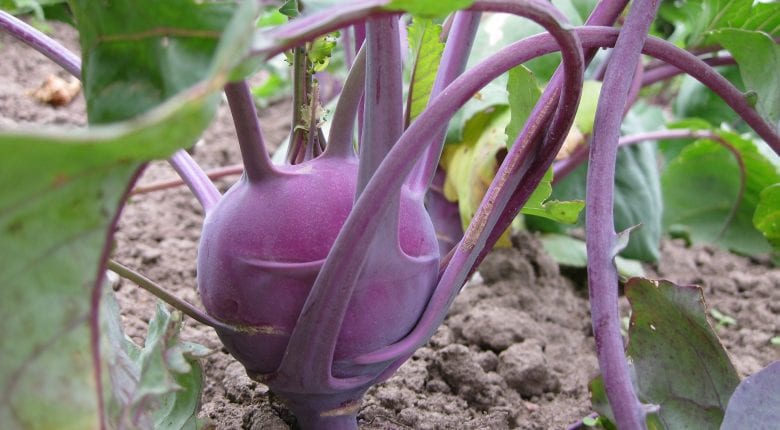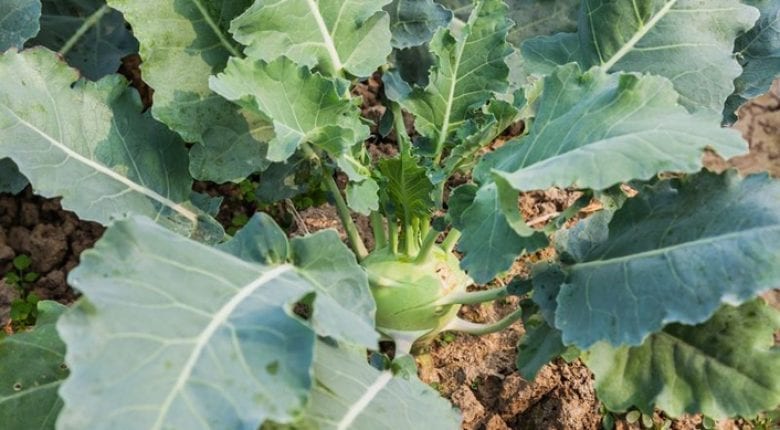Slightly sweet with a subtle cabbage-like taste, kohlrabi is a crispy vegetable which comes in two varieties, greenish-white or bluish-purple, and can be eaten raw, steamed or boiled.
Turnip cabbage
The kohlrabi is a bulb vegetable, with a lower half that grows underground, and is sometimes referred to as a ‘turnip cabbage’. Both white and purple varieties of kohlrabi are available for most of the year and are mainly grown in northern and western Europe. 
Greenish-white kohlrabi is usually grown in greenhouses and is particularly sweet. On the other hand, the bluish-purple variety tends to be grown outdoors and is slightly larger and more peppery. Europeans have been eating kohlrabi since Roman times. It became particularly popular in Liebherr’s homeland Germany in the Middle Ages – so much so that its German name, literally meaning ‘turnip cabbage’, has been adopted into other languages such as English, Japanese and Russian.
Is Kohlrabi good for you?
Kohlrabi is extremely rich in vitamin C and has good fibre content, which stimulates the metabolism and supports healthy digestion. It also contains folic acid, potassium, calcium, magnesium and iron. The leaves, in particular, are packed with vitamins, containing two to three times the amounts found in the bulb. This being the case, we recommend that you should always buy kohlrabi as fresh as possible, and then chop up the crisp, sweet, vitamin-packed leaves and add them to your dishes.
Keep Kohlrabi fresher for longer
Kohlrabi can be stored in the refrigerator for up to 29 days but, in a Liebherr BioFresh compartment, it can be kept fresh for up to 55 days. If you live somewhere where kohlrabi availability is somewhat limited, it can be frozen for up to 9 months, so you can keep some to hand, ready to add to your delicious recipes.
How do you like to eat kohlrabi? Please tell us your favourite recipes… Get in touch on Facebook, Twitter, or Instagram.
